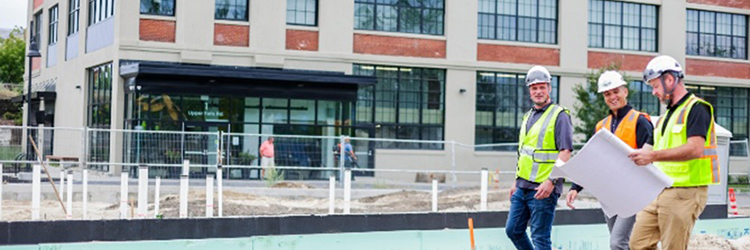Of inspections, personal inspections, and responsibilities - by Bill Pastuszek

Real estate appraisers appraise real estate, except that what we really value are the rights in real property represented by the real estate. But, real estate is tangible and generally fixed in location.
There have been some attempts to change the traditional role of the appraiser performing an inspection of a property for valuation purposes. As a result, there has been some confusion over what an appraiser is inspecting, when viewing the subject of a real estate appraisal.
One enhancement that has come to the forefront has been a hybrid appraisal where a third party inspects the real estate and provides a report to the valuing appraiser. This is a work in progress and where some GSE interest became apparent in using this splitting up of the appraisal process, there are some issues that need to be straightened out.
Viewing and inspecting the real estate is a critical part of the process. A statement in the certification notes whether or not we inspected a property and the results of the inspection are reported in the body of the report. Inspecting the property is critical for both residential and commercial appraisers. Likewise clients want to ensure that properties are adequately identified and inspected.
The large issue with third party inspections is ascertaining the inspector’s credibility and the realiability of the output from the inspection. Another issue is how to handle what is essentially “significant” assistance, since the inspection is conducted to obtain relevant physical characteristics of the subject property.
USPAP defines physical characteristics as “attributes of a property that are observable or measurable as a matter of fact, as distinguished from opinions and conclusions, which are the result of some level of analysis or judgment.”
The current edition of USPAP defines personal inspection as “a physical observation performed to assist in identifying relevant property characteristics in a valuation service.” The definition goes on to say: “An appraiser’s inspection is typically limited to those things readily observable without the use of special testing or equipment. Appraisals of some types of property, such as gems and jewelry, may require the use of specialized equipment. An inspection by an appraiser is not the equivalent of an inspection by an inspection professional (e.g., a structural engineer, home inspector, or art conservator).” USPAP has provided clarity.
Another definition may be helpful: Relevant characteristics are “features that may affect a property’s value or marketability such as legal, economic, or physical characteristics.”
This definition suggests that different types of properties require different approaches to what characteristics are relevant in a specific assignment. This is a scope of work decision. Thus, the relevant characteristics for a leased industrial facility are likely to differ dramatically from the relevant characteristics in an appraisal of a single family dwelling.
Just to be clear, here is the USPAP definition of an appraiser: “one who is expected to perform valuation services competently and in a manner that is independent, impartial, and objective.” If we really want to split the valuation and inspection functions, both are considered valuation services and individuals performing them must meet requirements of competent performance and ethical behavior.
As the Competency Rule of USPAP now states: “Perfection is impossible to attain, and competence does not require perfection. However, an appraiser must not render appraisal services in a careless or negligent manner.” Now, more than ever, appraisers (and appraisal users) need to use due diligence and due care and should approach the hybridization of the process carefully and with careful consideration of consequences, whether expected or unexpected.
Going back to the certification, USPAP guides us as follows: “When a signing appraiser(s) has relied on work done by appraisers and others who do not sign the certification, the signing appraiser is responsible for the decision to rely on their work. The signing appraiser(s) is required to have a reasonable basis for believing that those individuals performing the work are competent. The signing appraiser(s) also must have no reason to doubt that the work of those individuals is credible.” In the hybrid environment as envisioned by some, there may not be a way to make that judgment.
The appraisal profession, in the wake of the real estate meltdown in the first decade of the new century, underwent a reshaping and took a good hard look at itself. As a result of the difficult times for real estate and appraisers, the profession is in better shape and has a much higher credibility than previously. Eroding the credibility of an essential part of the appraisal process may streamline the process but will create problems in the next downturn for appraisers, users, and for public trust.
Bill Pastuszek, MAI, ASA, MRA heads Shepherd Associates, Newton Mass.
Reveler Development celebrates final phase of work at The Levee - new 51-unit apartment building in Biddeford


The Greater Portland industrial mid-year market update - by Nate Roop

Interest rates and inflation - by Matthew Bacon
As we all know, interest rates have been changing drastically, with movement in both directions, depending on the type and term of financing. The Federal Open Market Committee has taken drastic action in efforts to curb abnormally high inflation, but it hasn’t controlled labor cost growth to the extent that was intended.

Maine multifamily outlook: Opportunities in Portland, Bangor, and Lewiston-Auburn - Blake Wright and Kristie Russell
The multifamily market in Maine’s major cities presents a diverse range of opportunities for investors. We looked at the potential benefits and unique characteristics of three major submarkets in the state: Portland, Bangor, and Lewiston-Auburn. The information below is based on research done in CoStar and county registries, and focuses on multifamily properties that have four or more units.


 (1) (1).png)





.png)


.png)